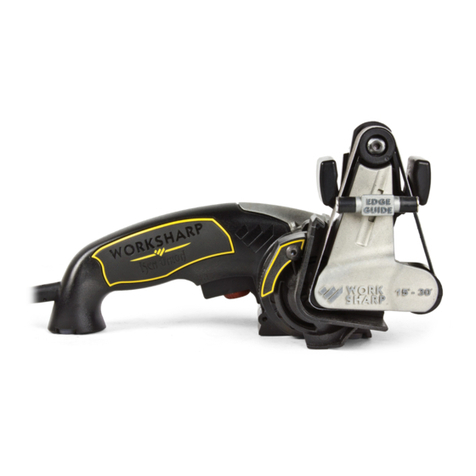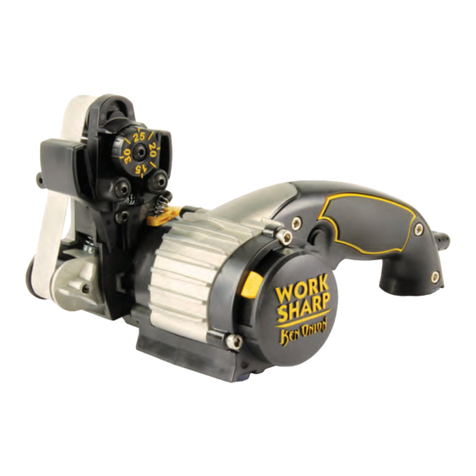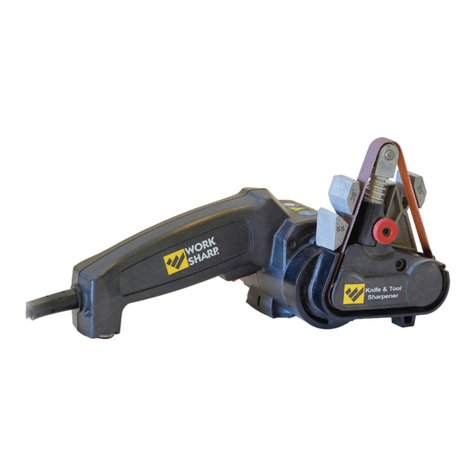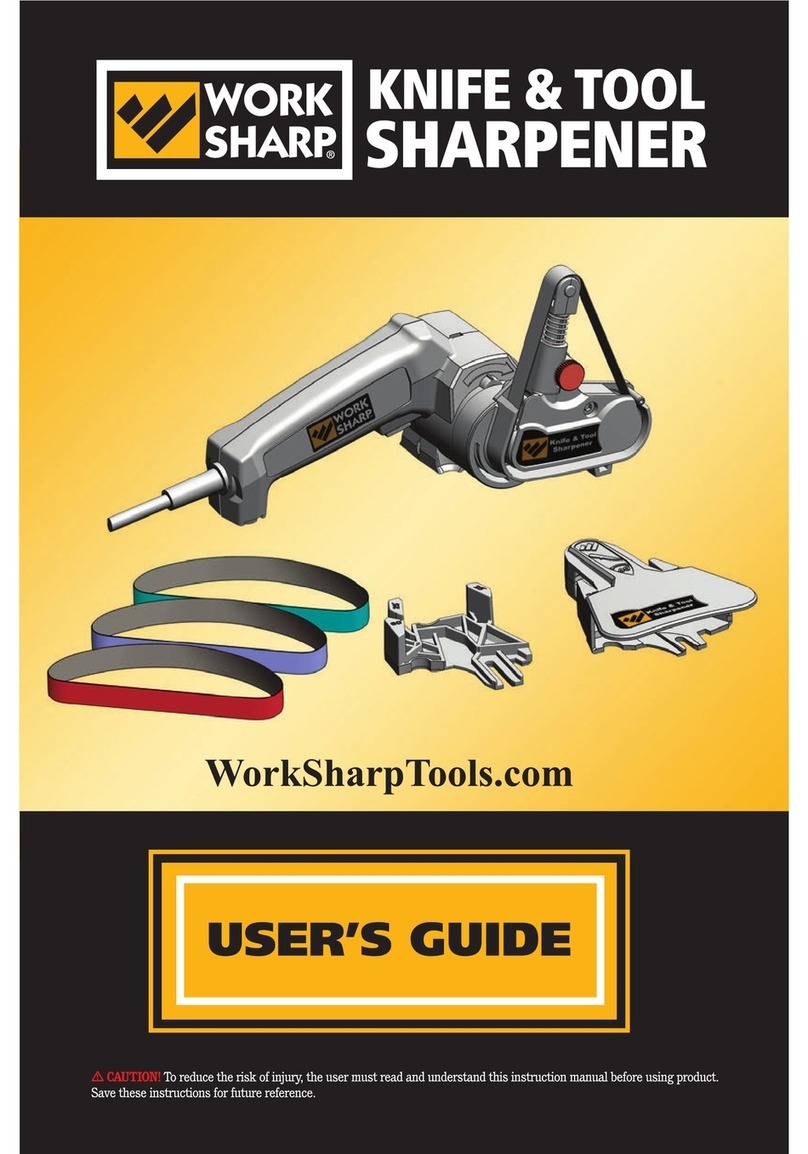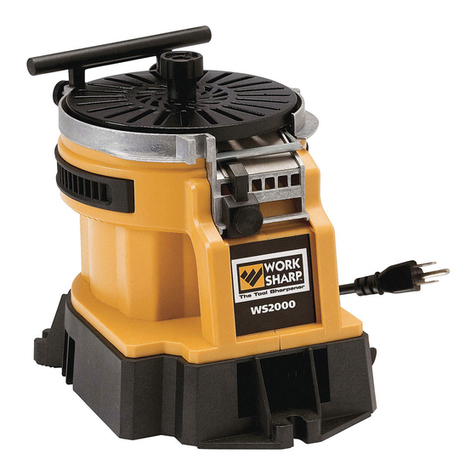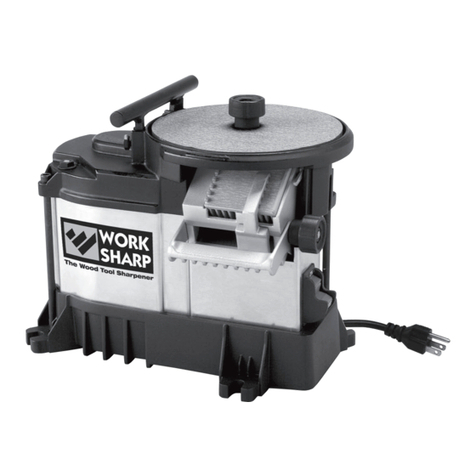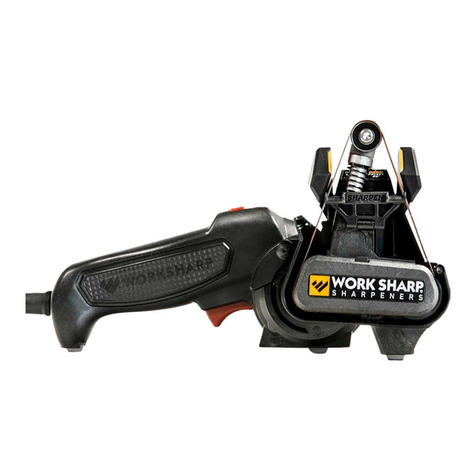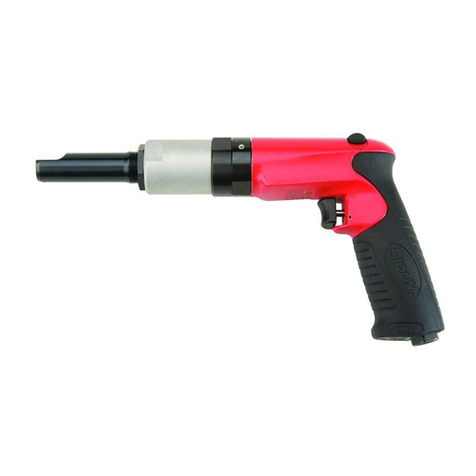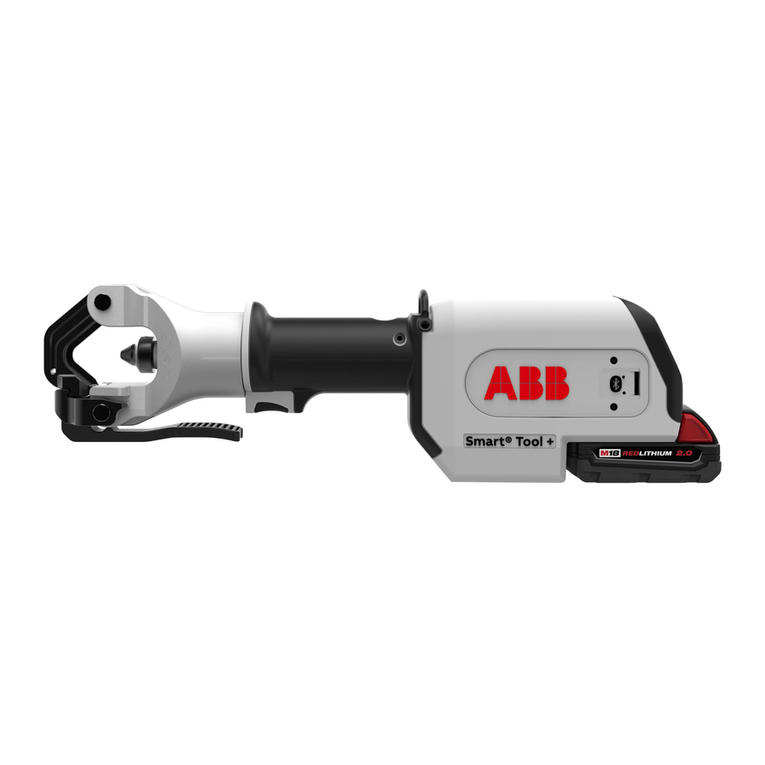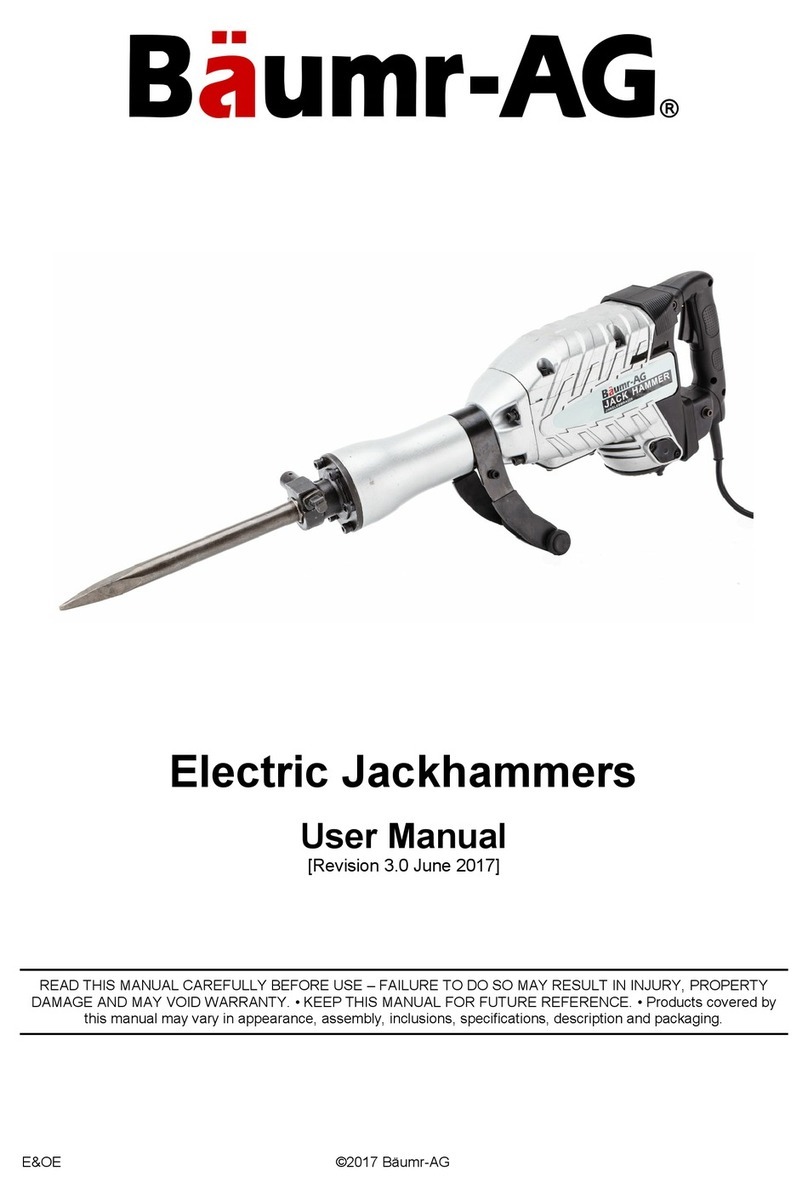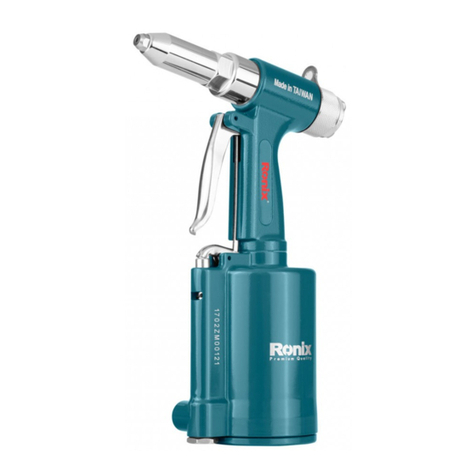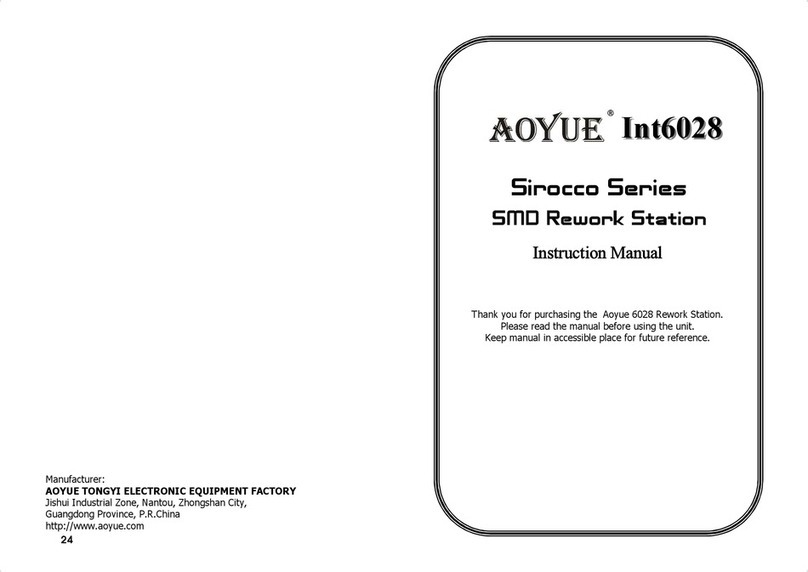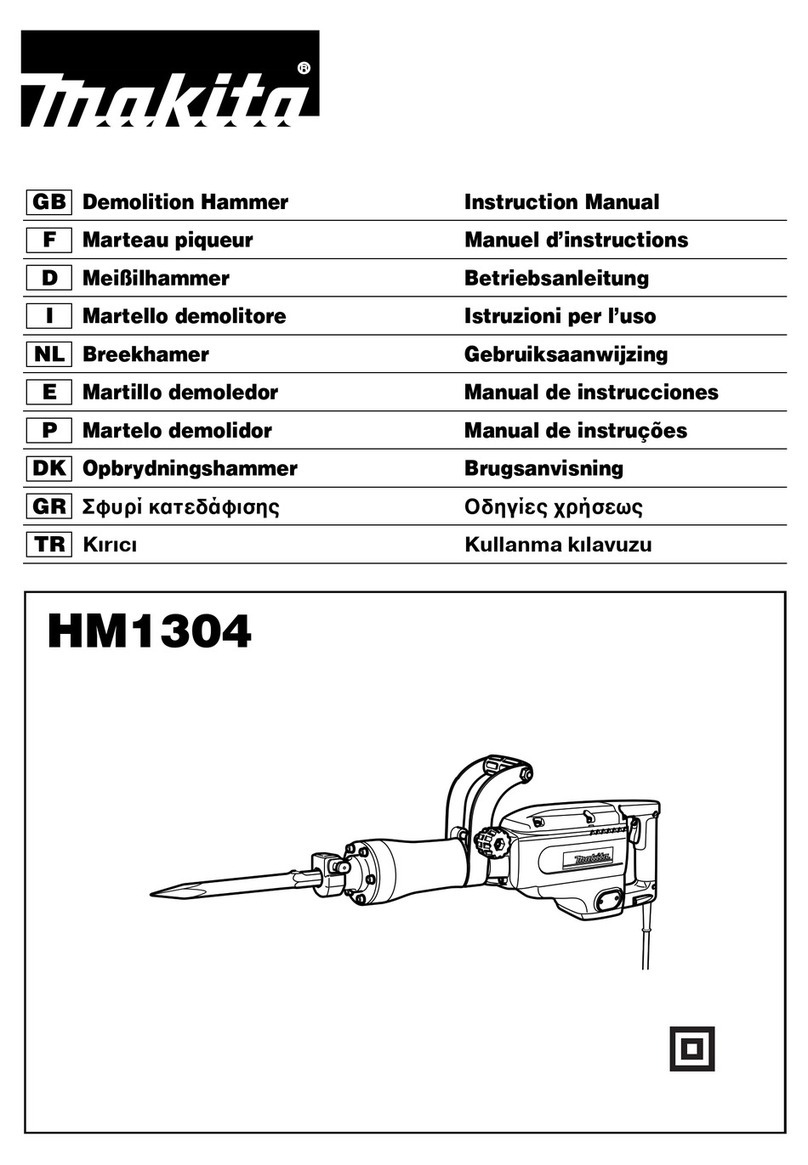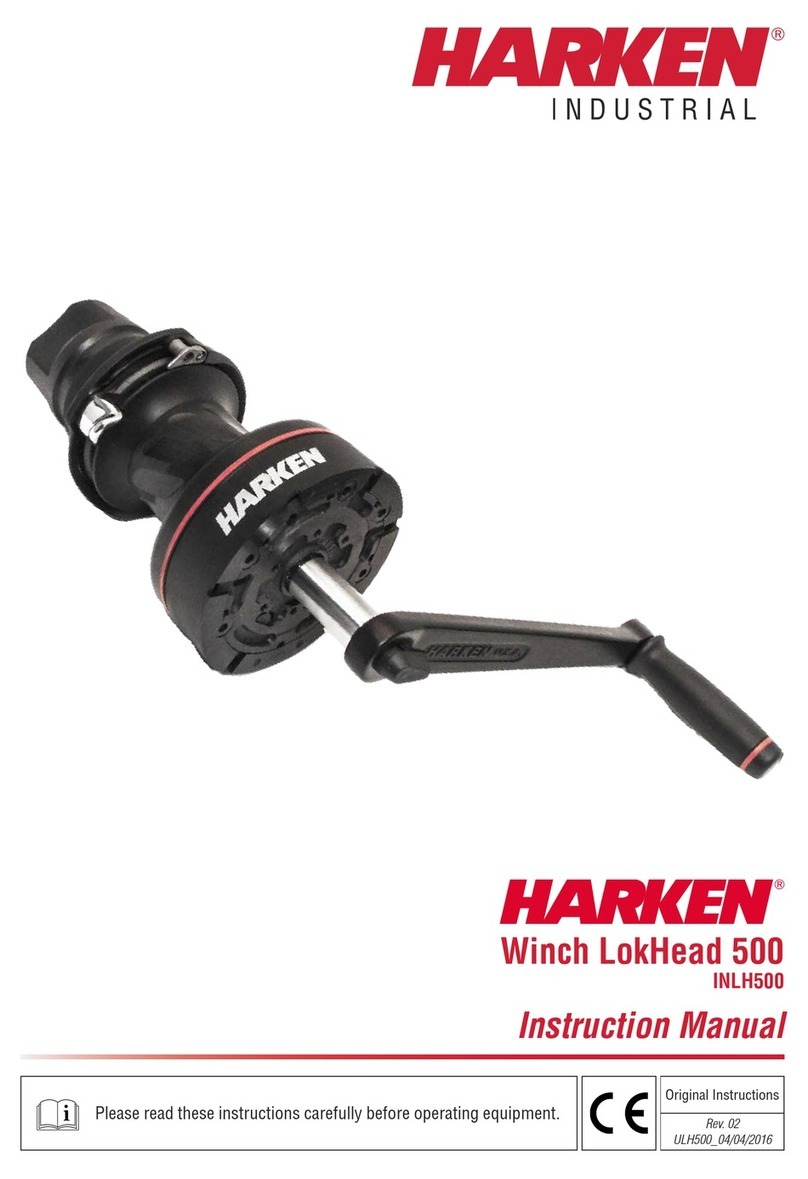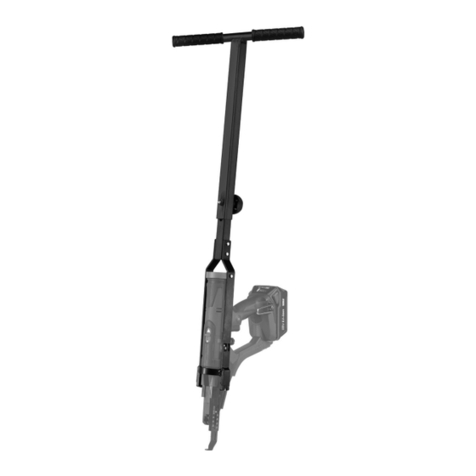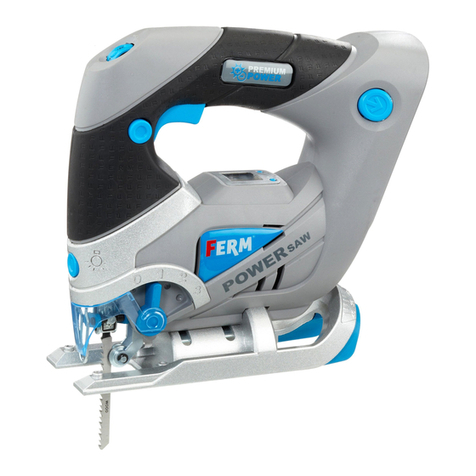
8www.worksharptools.com8www.worksharptools.com
3Assembling
Your Tool
1. Carefully remove the tool and the accessories kit from the box.
2. Refer to Component Checklist (page 7) to ensure that you have
received all the components, including Abrasives.
3. Remove all packing materials and store in case you ever need to
return the unit for servicing.
4. Visually inspect your tool for potential damage incurred during
shipment. If there is damage, call 800-597-6170 to speak to a Cus-
tomer Service Representative.
5. Apply PSA Abrasive. A clean work environment is critical during
the adhesion of the PSA Abrasive. Unpack and clean the tempered
Glass Wheels with isopropyl alcohol, paint thinner or acetone to en-
sure a clean surface to adhere the PSA Abrasives. Mineral spirits is
not recommended since it leaves an oily residue.
The 2 tempered glass wheels provided are intended to have a dif-
ferent abrasive grit on each surface. This allows you to have a coarse
grinding wheel for shaping and sharpening and a fine grinding wheel
for honing.
To apply the chosen 150 mm Abrasive to a Glass Wheel surface,
simply peel the backing off the abrasive disk. Handle the Abrasive
disc by the outer edges, being careful not to get any contaminants
on the PSA backing as they will produce lumps under the paper and
decrease sharpening performance. Flex the paper into a “U” shape so
the center of the Abrasive is centered on the Glass Wheel. See fig.
3-1. Slowly flatten out the Abrasive from the center working toward
the outer edge of the Glass Wheel. For best results, roll a dowel
over the Glass Wheel after adhering the Abrasive to remove any air
bubbles that have formed. If air bubbles remain under the PSA Abra-
sive after rolling, pierce them with a needle or fine knife point and
then press them firmly to remove the air.
Your WORK SHARP®also includes an Edge-Vision™Slotted
Wheel for see-through sharpening of radius tools using the Under-
side Sharpening Port. The corresponding slotted Abrasive is specifi-
cally designed for this Wheel. Make sure all the slots in the abrasive
properly align with the slots in the wheel surface. This will ensure
proper performance of the Edge-Vision™Slotted Wheel during use.
Sharpening Port PSA Abrasive adhered to the heat sink.
The 2" × 2" P400 PSA Abrasive is adhered to the heat sink at the
manufacturer. The abrasive in the
Sharpening Port laps the back of a
tool during sharpening. This signifi-
cantly decreases the burr, or wire,
during sharpening and dramatically
reduces sharpening time.
An extra piece of this abrasive
has been provided for you. To re-
place this Abrasive to the heat sink,
the Fence must first be moved all the way to the left of the Sharpen-
ing Port, and the wheel must be removed. To traverse the Fence to
the left, simply roll the Fence Alignment Knob toward yourself. Keep
traversing the Fence to the left side of the Sharpening Port until it
passes the notched wall on the left side and stops. Do not force the
Fence Alignment Knob or Fence. Once the Fence is completely on
the left side of the Sharpening Port, (See fig. 3-2.) peel the backing
off the 2" × 2" P400 PSA abrasive. Handle the Abrasive by the outer
edges, being careful not to get any contaminants on the PSA backing
as they will produce lumps under the paper and decrease sharpening
performance. You will have to slide the Abrasive under the Wheel
Shroud. Be sure that the Abrasive fits squarely on the heat sink
and that the upper edge of the Abrasive (closest to the center of the
Wheel Hub) fits right to the edge of the heat sink. See fig. 3-3.
6. Place the tempered Glass Wheel with coarse abrasives onto the
Wheel Hub. Mount the Wheel so the coarser side of the Glass Wheel
is facing up. Secure the Wheel with the provided Top Knob. Do not
over-tighten the Top Knob; it only needs to be finger tight.
7. Install the Top Tool Rest. To install your Top Tool Rest, first re-
move it from the packaging and locate the 2 provided thumbscrews
to mount the Tool Rest. Simply slide the Top Tool Rest into the T-
Slots on the top of the unit. See fig. 3-4. Thread the provided fas-
teners into the tapped holes in the Tool Rest. Ensure the Tool Rest
is level by placing a level on top of the Tool Rest surface. Once you
have located the height and level of the Tool Rest you wish, tighten
the 2 thumbscrews to secure the Tool Rest. Do not over-tighten these
2 thumbscrews, as you can potentially stress and/or damage the T-
Slots in the top casting.
Fig. 3-1
Fig. 3-2
Fig. 3-3
Fig. 3-4
